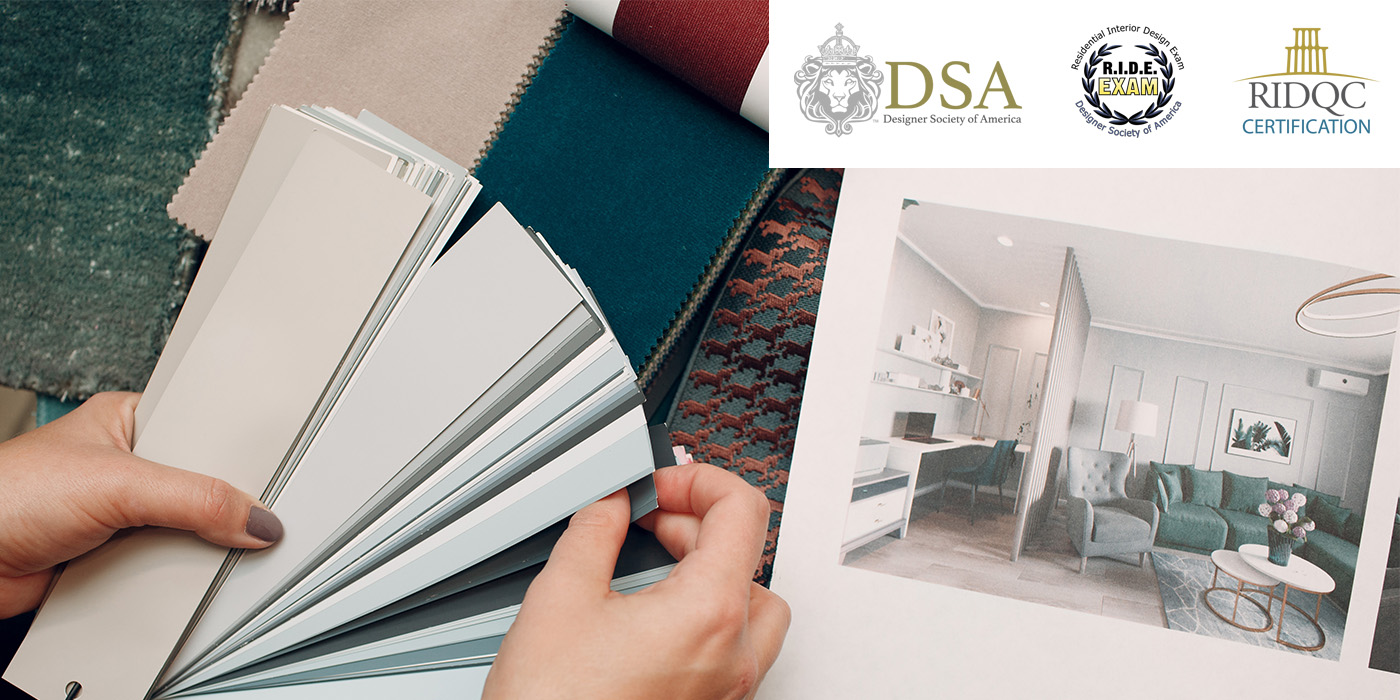Register Now! (Adult School office closed Dec 22 – Jan 5, 2026. Happy Holidays!)


Residential interior designers are skilled professionals who transform living spaces into beautiful and functional areas. Their expertise in design and aesthetics helps homeowners create personalized and comfortable living spaces that reflect their style and needs.
From key design elements and principles to the history of styles and furnishings from different eras to reviewing materials, finishes, color, and textiles, you will leave this interior design course with a fundamental overview of interior design essentials. You will also learn how to build a successful design business, cultivate your client base, and appropriately interact with clients in various scenarios.
This interior design certification course requires you to complete a final project, which will be submitted for review to the Designer Society of America (DSA), qualifying you to sit for the Residential Interior Design Qualifying Certification (RIDQC) certification exam. Course completion enables you to earn the R.I.D.E. (Residential Interior Design Education) credential as part of the final exam and qualify for the RIDQC certification exam.
The RIDQC exam voucher is included with course enrollment for qualifying students. You will also obtain a free one-year DSA membership.
Prerequisite: * There are no specific prerequisites for this course. You should have a high school degree or the equivalent, basic liberal arts knowledge, and an understanding of and interest in different cultures. You will also need a basic understanding of computers and must be comfortable navigating the Internet.
Location | Day(s) | Price | |
|
|
| Register |
According to the U.S. Bureau of Labor Statistics (BLS), the average annual salary for interior designers is $61,590. Salary can increase depending on several factors, including project length, clientele, type of employment, and experience. For example, the highest 10% earn more than $101,860.
The BLS also reports that the demand for interior designers is projected to increase by 4% through 2032. Lightcast labor data further shows that there were over 152,000 interior design jobs in 2023 alone.
Certified Residential Interior Designer FAQs
Interior designers are responsible for creating a visually appealing and functional indoor space. They choose design elements such as colors, lighting, furniture, and materials that complement the space and enhance its functionality. They work closely with clients to understand their needs and preferences, and then create a design plan that meets those requirements. Interior designers also consider practical aspects such as safety and sustainability while designing a space. They use their creativity and expertise to ensure that the indoor space not only looks good but also serves its purpose effectively.
Interior designers possess the transformative ability to elevate a simple space into a stunning masterpiece. Below are the key skills essential for thriving in this profession:
Interior design work is usually carried out in different locations, such as offices, home offices, client homes, and design centers. It is worth noting that approximately 20% of interior designers work for themselves, which means that they may have to work during evenings or weekends to meet their clients’ scheduling needs.
There are no specific prerequisites for this course. You should have a high school degree or the equivalent, basic liberal arts knowledge, and an understanding of and interest in different cultures. You will also need a basic understanding of computers and must be comfortable navigating the Internet. Students who complete the course and gain their R.I.D.E. will then qualify to sit for the RIDQC exam. This course is a prerequisite to the RIDQC exam, and qualifying students will receive a voucher to sit for the RIDQC exam.
Please click here to see the curriculum outline, price, course details, and frequently asked questions.